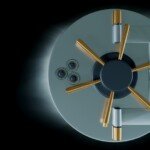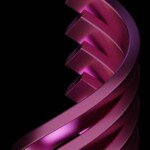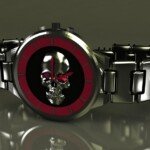Navigate the CNC world: Use five-axis technology to master complexity
Precision manufacturing not only solves problems; it unlocks potential. Whether you are pushing the boundaries of aerospace design, building life-saving medical devices, or crafting complex components for the next generation of technologies, the ability to shape complex, high-precision parts from reliable materials is crucial. This is Computer Numerical Control (CNC) Processingespecially its most advanced form – Five-axis CNC machiningnot only becomes a tool, but also a strategic partner for innovation. When this partnership requires unparalleled versatility and precision, companies like Great Become the key to success.
Mysterious CNC: The Engine of Modern Manufacturing
Fundamentally, CNC machining is a subtraction manufacturing process. Imagine a sculptor who carves materials to reveal the form hidden in it. CNC replaces the sculptor’s chisel with automated cutting tools programmed by computer programs, such as drills, mills or lathes, which take precise layers from blocks of solid material (metal, plastic, wood, composites) – ultimately molding it into the final part defined by a digital 3D model (CAD file).
Key features of CNC machining:
- Accuracy and accuracy: CNC machines have excellent dimensional accuracy and repeatability, reliably maintaining tight tolerances in batch yields (usually within microns or one thousandth of an inch).
- Complexity support: CNC is good at creating complex geometric shapes, internal features, cavities and complex contours, and manual machining or other processes are difficult or impossible to achieve.
- Material versatility: Ability to process a range of engineering grade materials, including metals (aluminum, steel, stainless steel, titanium, brass, copper), plastics (ABS, PEEK, DELRIN, DELRIN, nylon) and composites.
- Automation and speed: Once programmed and set up, the CNC machine can run unattended for a long time, consistently producing parts, reducing lead time and labor costs for high volume operations.
- Scalability: Suitable for prototypes of single parts until high-volume production runs with consistent results.
The evolution of the five axes: unlocking new capabilities dimensions
Traditional 3-axis CNC machining moves the cutting tool along the X, Y and Z linear axes (left and right, back, up and down). This is very capable for many applications, but has limitations on the surface of complex, engraving that require multiple settings or complex undercuts.
Five-axis CNC machining can enhance this capability exponentially. It provides Two other rotation axes:
- A-axis: Rotate around the X-axis (tilt the part forward/backward).
- B-axis: Rotate around the Y axis (left and right of the inclined parts).
- sometimes C-axis Used to rotate about the Z axis (rotate parts like lathes).
The power of five-axis machining lies in the simultaneous or controlled movement of all five axes:
- Complex geometry mastery: Machines in a single setup with complex shapes, deep cavity, curved surfaces, composite angles and complex undercuts – think of impellers, turbines, molds, prosthetics and aerodynamic components. This eliminates the need for multiple settings and greatly reduces error accumulation and potential damage.
- Top surface finish: By allowing the cutting tool to maintain optimal workpiece surface orientation throughout the cutting process (optimized tool’s "Attack angle"), five-axis machining achieves smoother, higher quality finishes, often reducing or even eliminating the need for a large number of manual finishes.
- Greatly reduces the setting time: Performing complex machining in a single fixture not only improves accuracy, but also greatly reduces redundant clamping, alignment and rezero operations.
- Enhanced tool life and coverage: Better tool orientation reduces vibration, allows for shorter tools (increased stiffness), allows for optimal chip evacuation, and provides better access to deep pockets or restricted areas, ultimately extending tool life and enabling previously unattainable features.
- Higher production efficiency: Faster machining cycles (due to optimized tool paths and fewer settings), reduced scrap rates and minimal secondary operations directly translate into cost savings and shorter time to market, especially for complex parts.
Why Greatlight rises to the rest in five-axis CNC machining
The leap to the five-axis processing is very big. It requires not only complex equipment, but also profound expertise in programming, process planning, tool selection, fixed design and quality control. This is Greglight Machine Leveraging its deep specialization is not just a supplier, but a true solution provider for complex metal parts manufacturing.
- Advanced five-axis capability: GREMLIGHT is equipped with a state-of-the-art five-axis CNC machining center with high speed, fast crossing rate and advanced control systems. This technology is the cornerstone of its capabilities.
- Production technology expertise: Owning a machine is one thing. Mastering them is another one. Greatlight’s team has an in-depth understanding of machining strategies, cutting dynamics and optimization techniques that are complex five-axis work for challenging materials. They understand the nuances of suppressing chatter, thermal management and extreme stability cuts.
- Complex metal parts solutions: Focused on solving the challenges of difficult-to-made metal components, huge magnificence. Does anyone else think it is impossible? They have technical weapons and engineering mindsets that can analyze, perfect and execute complex geometries, harsh tolerances, and exotic alloys of titanium or inconels (such as titanium or inconels).
- One-stop completion excellence: Greatlight understands that the journey does not end at processing, so it provides a comprehensive internal post-processing and finishing service. These include critical burrs, precision polishing (+ electropolishing), precision grinding, various heat treatments (annealing, hardening, speed regulation) and high-end surface finishes such as anodizing (type II and III/type hardcoat), gold plating (nickel, chromium, chromium, ZINC), powder coatings, silk screening and laser marking. This integrated approach ensures seamless quality control and greatly reduces supply chain complexity.
- Smart materials and quick customization: While specializing in almost all processable engineered metals and plastics, Greatlight excels in providing highly customized solutions. They understand the project schedule and emphasize Quicklyefficient handling without damaging quality – from rapid prototype to bridge production.
- Uncompromising accuracy: High-quality five-axis machining is more than just complexity. It’s about the precision of encountering complexity on the front. Gregtime is committed to achieving dimensional stability and tight tolerances that define high-performance parts.
- Competitive value: Leveraging efficient processes and technical advantages, Greatlight provides a high level of service and quality at surprisingly competitive prices, ensuring good value to customers.
Conclusion: Where complexity reaches perfection
Five-axis CNC machining proves the proof of human creativity in manufacturing, thus creating parts that once were part of science fiction. It represents the pinnacle of subtraction manufacturing capabilities and is well suited to the complex, highly tolerant needs of advanced industries.
It is crucial to choose the right manufacturing partner for such demanding tasks. It requires more than just machines; it requires proven technology, deep expertise, a culture of problem solving, and a commitment to end-to-end quality. The company likes it Greatoverly special in precise five-axis machining and post-processing, reflects this ideal. They transform challenging blueprints into tangible, high-performance reality, accelerating innovation while ensuring reliability. When your project is precisely mastered, the complexity depends on Great It should be your first call. So, are you ready to turn the most challenging design into reality?
FAQ: Understand five-axis CNC machining
-
Q: What makes five-axis and three-axis CNC different?
- one: The three-axis machine moves linearly (x, y, z). Five axis adds two rotation axes (usually A and B, tilting the workpiece near X/Y), allowing the tool to approach the part from almost any angle At the same timeenable complex curves and undercuts in a single setup without repositioning the part.
-
Q: What materials can be used as a Rice machine using five-axis equipment?
- one: Greatlight specializes in a variety of processable metals, including aluminum (various alloys), steel (gent, tool, stainless steel), titanium, brass, copper, copper, inconel and other external actuators, as well as engineering plastics such as PEEK, DELRIN, DELRIN, ULTEM and NYLON. We address the unique challenges of each material.
-
Q: What are the major industries that benefit the most from your five-axis service?
- one: Our services are essential for industries that require extreme complexity, accuracy and performance: aerospace (turbo blades, structural stents), medical (implantation, surgical instruments, complex housings), defense, automation (high performance, racing, racing, EVS), semi-teacher tools (chamiconductor tools (Champers, handles) and advanced robots and advanced robots.
-
Q: Despite the higher cost of the machine, can five-axis machining really save money?
- Answer: Absolute. While the speed per hour may be higher, eliminating multiple settings (reducing the risk of labor, fixed expenses and errors), shorter machining times through optimized tool paths, improved surface quality and lower waste rates often result in five axes More cost-effective overall For complex parts.
-
Q: How much precise effect can be achieved through five-axis machining?
- one: Accuracy depends to a large extent on the geometry, size, material and equipment of the part. However, Greatlight always implements tolerances within range +/- 0.0002" (+/- 0.005mm) or better For key functions of the right parts, leverage high-quality machines, meticulous calibration, temperature control and tool management.
-
Q: Will Greatlight handle prototypes and production runs?
- A: Yes. We excel in rapid prototypes and bridge tools using five axes, making complex prototypes the same as the final production parts. We seamlessly run from low-volume prototypes to high-volume production by using the same process excellence.
-
Q: What does it mean "One-stop post-processing"?
- one: Greatlight does the whole process outside of processing under a roof. This includes critical burrs, precision grinding, polishing (manual and electropolishing), heat treatment (intensity, pressure relief) and surface finishes (anodized, plating, powder coating, powder coating, painting, laser marking). This ensures seamless quality control and faster turnaround speeds.
- Q: How do I start with a custom five-axis project’s Greatlight?
- one: Just reach out! Provide your CAD model (steps, IGES, SOLIDWORKS, etc.) with drawings with critical tolerances and finishes, material specifications and quantity requirements. Our engineering team will analyze designs, provide manufacturing feedback (DFM), and provide competitive quotes. We then manage the rest through production and final quality assurance. Start your custom precision parts project now!

















